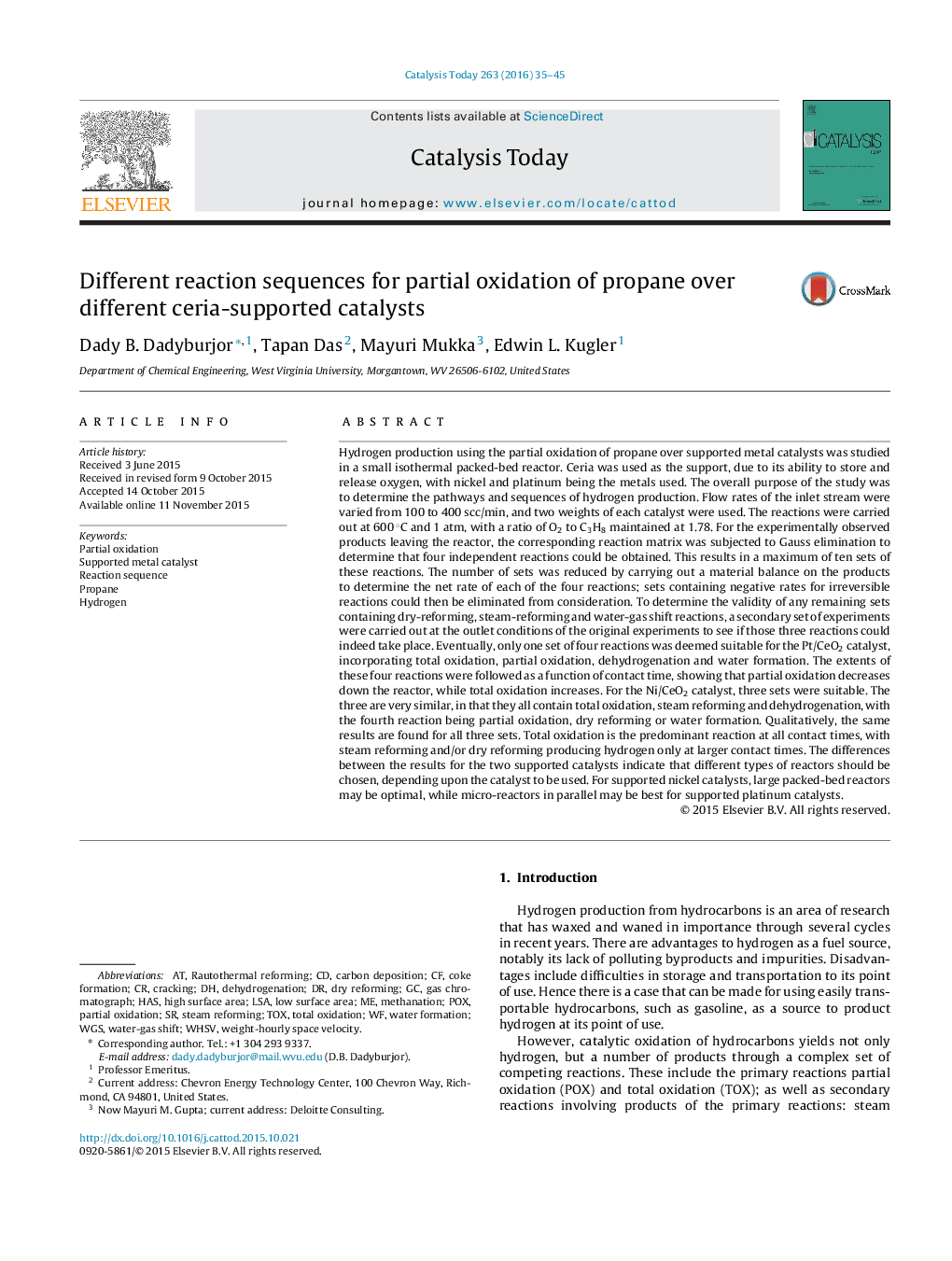| کد مقاله | کد نشریه | سال انتشار | مقاله انگلیسی | نسخه تمام متن |
|---|---|---|---|---|
| 53400 | 46968 | 2016 | 11 صفحه PDF | دانلود رایگان |
• Partial oxidation is a complex set of reactions, grouped into an indirect or direct sequence.
• The complex set can be shown to reduce to four independent reactions.
• The independent reactions were monitored with increasing contact time in the reactor.
• Pt/Ce2O3 catalysts follow the direct route; Ni/Ce2O3 catalysts the indirect route.
Hydrogen production using the partial oxidation of propane over supported metal catalysts was studied in a small isothermal packed-bed reactor. Ceria was used as the support, due to its ability to store and release oxygen, with nickel and platinum being the metals used. The overall purpose of the study was to determine the pathways and sequences of hydrogen production. Flow rates of the inlet stream were varied from 100 to 400 scc/min, and two weights of each catalyst were used. The reactions were carried out at 600 °C and 1 atm, with a ratio of O2 to C3H8 maintained at 1.78. For the experimentally observed products leaving the reactor, the corresponding reaction matrix was subjected to Gauss elimination to determine that four independent reactions could be obtained. This results in a maximum of ten sets of these reactions. The number of sets was reduced by carrying out a material balance on the products to determine the net rate of each of the four reactions; sets containing negative rates for irreversible reactions could then be eliminated from consideration. To determine the validity of any remaining sets containing dry-reforming, steam-reforming and water-gas shift reactions, a secondary set of experiments were carried out at the outlet conditions of the original experiments to see if those three reactions could indeed take place. Eventually, only one set of four reactions was deemed suitable for the Pt/CeO2 catalyst, incorporating total oxidation, partial oxidation, dehydrogenation and water formation. The extents of these four reactions were followed as a function of contact time, showing that partial oxidation decreases down the reactor, while total oxidation increases. For the Ni/CeO2 catalyst, three sets were suitable. The three are very similar, in that they all contain total oxidation, steam reforming and dehydrogenation, with the fourth reaction being partial oxidation, dry reforming or water formation. Qualitatively, the same results are found for all three sets. Total oxidation is the predominant reaction at all contact times, with steam reforming and/or dry reforming producing hydrogen only at larger contact times. The differences between the results for the two supported catalysts indicate that different types of reactors should be chosen, depending upon the catalyst to be used. For supported nickel catalysts, large packed-bed reactors may be optimal, while micro-reactors in parallel may be best for supported platinum catalysts.
Figure optionsDownload high-quality image (74 K)Download as PowerPoint slide
Journal: Catalysis Today - Volume 263, 1 April 2016, Pages 35–45
